
Church and Wellesley is the stuff dreams are made of.
The famous intersection that bisects Toronto’s gay neighborhood served as the backdrop for the U.S. remake of Queer as Folk, which was set in Pittsburgh but filmed on location amid the bustling bistros and back alleys of Church Street. The famed district has long held a special place in queer life not merely because of its pop culture provenance—it served as a pilgrimage for LGBTQ people across Canada and the U.S., who would come from smaller cities and rural areas seeking their place in the sun.
But around 2010, Toronto’s community awoke from its queer fantasia to a ghoulish, decade-long ordeal. Eight gay men disappeared over the next seven years, many of whom frequented the same bars and nightclubs. But despite the fact that many of those who suddenly went missing shared strikingly similar characteristics—recent immigrants with dark complexions and thick beards—police failed to see a connection. Bruce MacArthur, a 67-year-old landscaper known for a possessive streak, wouldn’t be arrested until January 2018. He was finally sentenced this year after confessing to the killings, given life in prison without parole.
Why did it take so long to get justice? And why didn’t the police recognize what was happening sooner? Those questions drive Uncover: The Village, the third season of the CBC’s true crime anthology podcast. Justin Ling, an investigative journalist who began digging into the then-unsolved crimes nearly four years ago as a reporter for VICE Canada, hosts the nine-episode saga, which premiered in April. New episodes will be released weekly until June.
How about we take this to the next level?
Our newsletter is like a refreshing cocktail (or mocktail) of LGBTQ+ entertainment and pop culture, served up with a side of eye-candy.
In a half-hour phone conversation, Queerty’s Nico Lang spoke with Ling—who also writes for BuzzFeed and MacLeans on issues like politics and cybersecurity—about the gripping podcast. This interview has been edited and condensed for clarity.

Nico Lang: What spurred your initial interest in the project?
Justin Ling: It was a slow summer. It was a Thursday in the dead of July and there was nothing going on. I had this memory flash of a story a friend of mine had been working on two years earlier about these missing men from the village. In 2013, there was a fair bit of coverage about these three missing men. I remember thinking at the time that it had all of the hallmark of serial killer—three guys with remarkably similar features all disappeared around the exact same area all with two years. To me, it was painstakingly obvious. I just started googling until I found the original story I remember reading back then. It’s by my former colleague Andrea Houston at Xtra—which is kind of like Canada’s version of Queerty.
I went back and started looking for updates. There just weren’t any. There was nothing on the Toronto Police website, nothing really in the newspapers, nothing anywhere. So I started reaching out. I thought that maybe all these guys came back. They were found and the police just didn’t update everybody. I reached out to Andrea, I reached out to the cops, I reached out to friends and family, and I started hearing back from people, “No, we still have no idea what happened.”
It would be misleading to say that I spent every single day for the following two years pounding on doors and only working on this because that’s not what I did. But over the course of two years, I tried to piece together what had happened to these three guys. Ultimately, it culminated in a story that I wrote in June 2017. I offered as much as I could in terms of the details, but also I just said that it was insane that we let this story fall by the wayside. It was unnerving because I published that story and a week and a half or two weeks later, it was with Pride weekend here in Toronto. The last day of Pride, Andrew Kinsman went missing. Within three weeks of breaking that story, another man had disappeared. It underscored what I kind of feared from the beginning. That was followed by a whirlwind of fear, paranoia, and anxiety that ultimately culminated in the arrest of Bruce MacArthur.
Even before you got involved—just reading about the three deaths in 2015—it felt obvious to you that it was the work of a serial killer. You state throughout the podcast that it was really obvious to the community. If it was so obvious to you, the people around you, why did it take so long to get justice?
It’s not a simple answer. I wish I could say it was this one terrible cop who decided it wasn’t worth the money or time and he’s the one who’s to blame. If that was the case then you can fire that cop and everything will be better. But the reality is that’s not what happened. Either some, most, or all of the officers who worked this case from the beginning also had a pretty strong suspicion of a serial killer.
They went and interviewed Bruce MacArthur and Bruce MacArthur lied to them. The trouble is they didn’t catch him in those lies. They didn’t get the evidence they needed to disprove those lies. I genuinely believe that if they had spent more time on it, they would have done that. They didn’t have the evidence that they needed to go in 2013, but they definitely had it in 2015 when Soroush Mahmudi went missing. The problem that the police detachment that handled Soroush Mahmudi’s case didn’t talk to the detachment that handled the three original missing person cases, and they were never connected. They should have been. There should have been someone sitting in their desk going, “Oh my God, this guy fits the profile to these other missing then men to a T.”
If the police had more properly investigated and dealt with Soroush Mahmudi’s missing person file, they would have known that he had previously dated a transgender woman. If they had called her—and they didn’t—she would have told them that he hung around gay bars pretty consistently. That would have given them the big red flag that maybe he was connected to the other three missing men. If they had done that in 2015, maybe four other men wouldn’t have died.

I think one of the most compelling aspects of the podcast was the idea that because these were queer men and primarily men of color, it made it easier for the police to ignore their disappearances. How did that theme reveal itself to you during the investigation?
One thing the police intoned when I spoke to them at various points of the investigation is that maybe these guys picked up and left or maybe they went back home, ignoring the very real obvious reality that their home was Toronto. The families were saying, “My husband didn’t go back to Afghanistan. He knew he would get killed there.” In the case of Majeed Kayhan, he was openly gay. Do you think that he wanted to go back in the closet so he could live in Kabul? I don’t think so. Skanda Navaratnam was an activist in Sri Lanka, and if he went back, he likely would have either been killed by the Tamil Tigers or the government.
When I followed up later about some of the other men, I remember talking about Selim Esen and the police said, “He’s transient and uses drugs.” He had a permanent apartment at the time he went missing. He had people who loved and cared about him. He was actually in a peer counseling course and—by a lot of accounts—was getting control of his substance abuse issues.
Those individual assumptions all together let them go, “These guys are probably fine or they died of non-suspicious causes.” That’s what let them tell themselves there wasn’t a serial killer. In reality, for each one of those things to be true, it would be one in a trillion probability for one man to go back to Afghanistan, for one man to go back to Sri Lanka, for one man to overdose, and for one man to commit suicide. That doesn’t happen to men who looked that similar to each other who all live in the same neighborhood.
What kind of impact did this have on the queer community in Toronto at the time? When I was listening to the podcast, I kept thinking that if all of these men had disappeared at my local gay bar, the police hadn’t done anything about it, there were fears of a serial killer, and no one had answers, that would seem so terrifying.
Sometimes people get hyperbolic and pretend like the entire community was at a standstill. That didn’t happen. But you’d walk through Church Street—whether it was 2010 when Skanda when missing or 2017 when Andrew went missing—and people would sit around the bar or the coffee shop and say to each other, “Something’s really wrong here.”
People got together—people who barely knew these guys—and grabbed stacks of missing person posters and went out and started blanketing the city. There was a point in time where in Toronto you couldn’t walk five feet without seeing Andrew Kinsman’s face. In 2010, you couldn’t go anywhere in the village without seeing Skanda’s face. People just picked up and helped out, which is why it was so galling to hear the chief of police say the community didn’t come forward with information. The community was out there busting their asses trying to get information. I saw the products of that labor. It was an immense undertaking, and people’s lives have been like torn apart from doing that. Friends of Skanda did it in 2010, they did it 2013, and they kept up and did it again in 2017. That was really hard on people.
The relationship between the police and the queer community has historically been fraught—dating back to Stonewall. If there’s already this deep-seated distrust, how did all of this play into that?
Before Andrew Kinsman went missing, there was an emergent fight happening over police participation in Pride. Black Lives Matter stood up and said, “We don’t want armed officers marching in Pride. It’s offensive, it’s insulting, and it’s traumatizing for a lot of people.” Almost at the same time, police were sending undercover officers into a park in the city’s West End to arrest men who were cruising. That’s something that had been happening for decades.
When Andrew went missing, all bets were off. People were furious. People were so angry, and they stayed angry for the better part of two years after that. They’re still angry. The fight is still ongoing about police participation in pride. Police withdrew themselves last year, recognizing how offensive that would be, but they’re back in this year. There’s a lot of people who are standing up and saying, “You didn’t learn a damn thing. If you think you can strongarm your way into pride after all this, then you’re very out to lunch.”

Why did you feel it was so important for people to hear from the victims’ families and people who knew them?
In the coverage of a lot of this, I was seeing this trend that there was Andrew Kinsman and then seven brown dudes. It bugged me because each one of these guys had a really interesting story behind them. Two of them are Sri Lankan refugees. One of them came over on this rickety, overcrowded death trap of a ship, made it to British Columbia, was detained by the Canadian government for upwards of six months, made it to Toronto, and was trying to get by barely earning any money. He ultimately had his refugee claim denied and was set for deportation. He became one of the victims. That story is heartbreaking. It speaks to failures around immigration, welcoming new Canadians, and a whole bunch of different issues.
The idea was to point out that these people were not an “Other.” They could have been people you might know. In some cases, they weren’t vulnerable and they weren’t marginalized beyond maybe their immigration status and their skin color. Skanda Navaratnam was well-liked, had a big circle of friends, had a good job, had a nice apartment, and had just adopted a puppy. He was just like thousands and thousands of people in the city. There were individual things that marginalized each one of these men, but they also had a story and a life beyond that.
I don’t want people to listen to these guys’ stories out of obligation because they feel sad and they feel like they have to. I want to tell you a story where you find it genuinely interesting to learn about these men and what led to their disappearance. I hope it proves a lesson for other news outlets: You can go into these men’s lives and people will listen.
Their disappearance and the lack of investigation was a way of erasing these men from history, which is something we think about as queer people a lot. As a queer person yourself, how did it feel meaningful to make the lives of people who had been erased visible again?
In episode two, I sit down with a trans activist in the park next to the 519 community center. She took me over to this memorial for transgender people who had died in the city, and it really stuck with me. It’s just a chalk drawing of the transgender symbol. She said, “It gets washed off or vandalized, but when it does, someone will go up and redo it. What people will do is write the chosen names of the trans people they’ve lost. Everyone will always know they’re there.”
I think that was a nice metaphor for what we’re trying to do—let people know that these men weren’t forgotten or sort of wiped away. They’re still there.
There have been just a handful of episodes released at the moment. What can listeners expect as the season continues?
It’s a journey. We go back to 1975 and we look at the spike of murders, many of which have gone unsolved. We ask the question of: “What did police do back then? What systemic and societal things led to them being unsolved?” These were a lot of the same questions we asked about Bruce MacArthur. In some cases, we get very similar answers, and in some cases, we get very different ones.
You’re going to meet people who lost loved ones and didn’t even know all of the details about their loved one’s death. We’re trying to provide it to them for the first time. At one point in episode three, we talked to a woman who has a picture of her brother who was murdered in 1978 on her bedside table. As she’s sitting and talking to us, she said, “I walked over to that police station in 1978 and I had never heard from the cops again.”
We also go into these really interesting bits of queer history and show how they link together. In Canada, our version of the Stonewall Riots were the Bathhouse Riots. In 1981, police raided six or seven different bathhouses and arrested more than 300 people. There were angry, violent riots that came from that. People were absolutely pissed. I knew that history and most queer people in the country know that cursory amount about what happened. What I didn’t know is that for years prior to that, these murders were occurring. There were other raids and other morality busts.
Just a year prior, police had killed a man in custody who they arrested during a morality raid. Parts of this history have never been connected in any real way before or at the very least haven’t been published in some 40 years. What we tried to do is explain that it wasn’t just one night of raids that made the community angry. It was year after year of indifference to violence that targeted the community, of harassment and persecution, of hate speech, and of just absolute repression. It builds a narrative that the community needs to start telling more.
I will never understand how bad we are telling our history because it’s very interesting, it’s thought-provoking, and unfortunately it seems like we haven’t applied some of those lessons that we learned back then.
Photos by Gerald Hannon

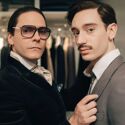

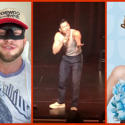
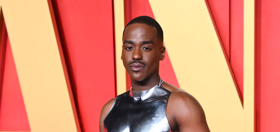


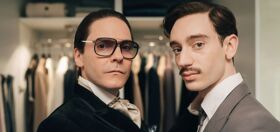
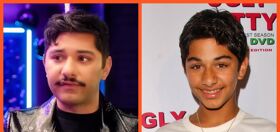


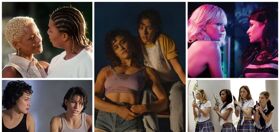


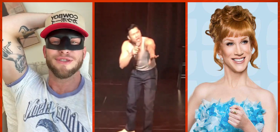

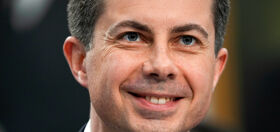

Kangol2
I appreciate Nico Lang’s questions and Justin Ling provides great answers about serial killer Bruce MacArthur, but this tragedy can be boiled down to a few things. 1) the cops didn’t move expeditiously when gay activists urged them to because they have historically been hostile to the concerns of LGBTQ people. 2) Also it took so long because the victims were mostly immigrants and people of color. 3) Lastly, the murderer was a middle class white gay bear who only provoked suspicion when another white guy linked to him went missing. Maybe the cops will pay attention and respond more carefully and swiftly should another tragedy like this ever start to occur.
ethan_hines
Don’t forget he disposed of the bodies in his yard and flower pots. So it was hard to even identify the victims.
iamru2
Points 2 and 3 ridiculous race baiting and racist accusations without any proof!
Kangol2
@iamru2, “race baiting” in your mind and yours alone. Don’t be so fragile!
Tombear
As a gay man I can say this, many groups of people feel gay lives are disposable.
ethan_hines
Why are you just getting around to posting this now? This has been in the news at least 6 months ago.
Kangol2
Queerty did post about it back when MacArthur was initially arrested, and a bit more as the authorities discovered more of the murdered men’s body parts in the planters.
rayk
I was staying in a bath in Toronto for a weekend when the police raided the baths. I was coming back to the bath I was staying at and saw the cops beating and dragging the men from the bathhouse. I had enough sense to leave the city right then and there and leave all my belongings in my room.
The police kept the list of members of the bathhouse and named them all sexual deviants. I was advised to never go back into Canada again or risk being arrested on that charge. I stayed away from Canada for several years to avoid being arrested.
Now I would not go back to the baths because I have a husband of 37 years and am happy with him and have no need for the baths but I can say I did have a good time there.
Billysees
rayk happily writes —
” … I have a husband of 37 years and am happy with him … ”
Good for you rayk and many more years of happiness ‘with him’.
Mikey E
Rayk, are you sexually monogamous with your husband?
Mikey E
Justin Ling claims that “Police withdrew themselves last year [from Pride], recognizing how offensive that would be.” Anyone reading a newspaper last year would know that the police only withdrew because they refused the organizer’s demand that they march out of uniform. They certainly never “recognized how offensive” their participation would be. Pride organizers were caving in to demands from “BLM Toronto,” which is itself run by racist conspiracy mongers, including one woman who called white people “genetic defects.” The Pride organizers were widely denounced for imposing conditions on police participation, and all major sponsors pulled out. If Ling can’t even be honest about stuff that is widely reported on, how can anyone believe him about anything else?
BTW, how weird is it that Ling moves on to another topic after just 1 episode of his podcast? You might think that serial murders of 8 gay men might merit a few podcast episodes. But after just one episode, he’s bored and wants to talk about transgenderism. /smh/
nitejonboy
I Agree, if you can’t devote more than just one episode to the serial murders of 8 gay men, and the possibility that there were many more murdered over the years that can’t yet be linked to the killer, then you are a pretty shallow reporter and I’m not interested in your work. This topic deserves an entire series of episodes. Not to mention whole books and documentaries about it. I pray it gets more attention from someone more talented than Ling.